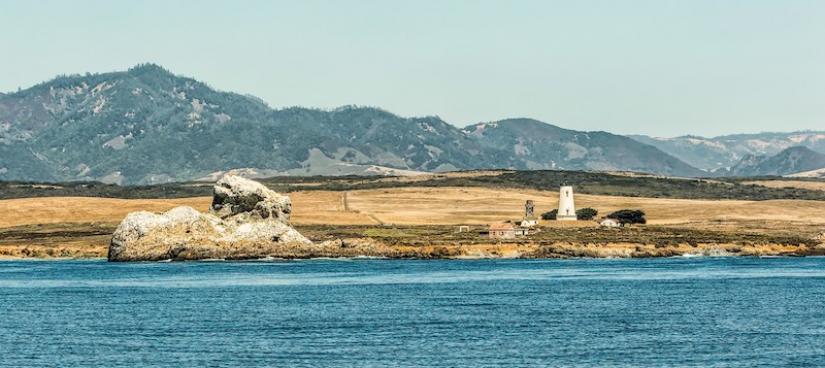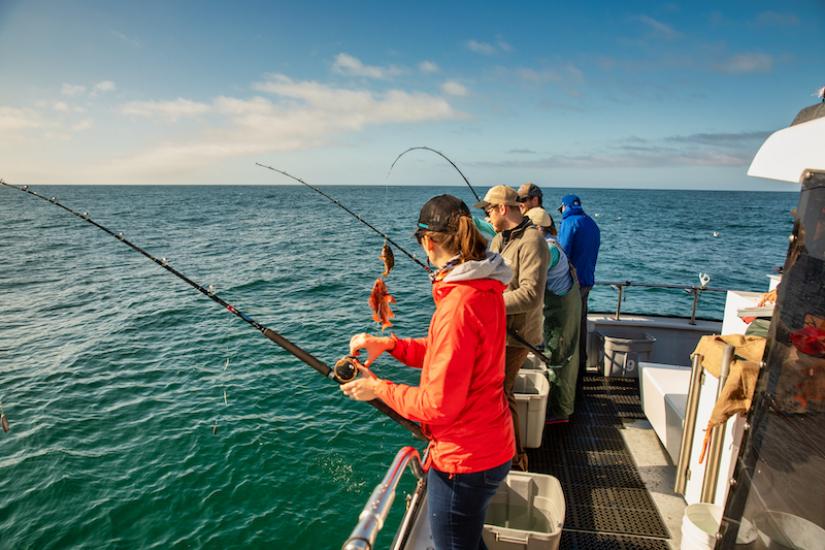Understanding the impacts and effects of marine protected areas (MPAs) on California’s coastal communities is challenging due to the complex and competing needs of people and coastal ecosystems.
Over the past 15 years, researchers have monitored California MPAs and sought to assess the efficacy for enhancing the abundance, biomass and diversity of species targeted by fisheries across multiple habitats.
While California’s MPAs were implemented more than a decade ago to protect marine species and habitat, it has been difficult to quantify the long-term impacts of MPAs. Several MPAs have positively impacted various socioeconomically valuable fish communities, but the impacts of fishing pressure — a primary ecological stressor MPAs seek to manage — is poorly understood.
In a newly released paper, External fishing effort regulates positive effects of no-take marine protected areas, researchers with the California Collaborative Fisheries Research Program (CCFRP) describe the effects of fishing pressure on no-take MPAs for the first time. The analysis is the result of more than 15 years of data collected through cooperative efforts and diverse partnerships, and will inform the future implementation and management of California’s MPAs.
“A critically important unanswered question about marine reserves in California, and in many locations globally, is how spatial differences in fishing pressure affect the strength of MPA responses,” says CCFRP Lead Principal Investigator Scott Hamilton from Moss Landing Marine Laboratories. “We haven’t been able to address that question until recently, when the California Department of Fish and Wildlife (CDFW) developed a unique data set of recreational fishing effort that matched the scale and locations of our MPA monitoring efforts.”

The recently published paper was a collaboration between researchers at Moss Landing Marine Laboratories, Cal Poly San Luis Obispo and CDFW. CCFRP is one of seven MPA long-term monitoring research teams working to better understand MPAs in California. Funding was provided by The Ocean Protection Council (OPC) through the Marine Protected Area Monitoring Program and administered by California Sea Grant in partnership with OPC and CDFW.
The team documented changes in abundance, size and biomass — a measure used to define the total weight of a given species of fish in one area — inside and outside of MPAs over time. Fish are more abundant, larger in size and greater in biomass inside the MPAs compared to reference areas open to fishing. However, reserves in some locations exhibited more rapid changes than those in other locations. The researchers report the strength of an MPA’s impact depends on the intensity of fishing outside the MPAs. In areas where there is less pressure from fishing, there is more biomass located both inside and outside the MPA. Where fishing pressure is higher, there is a larger difference between the biomass of the protected fish inside the MPA and those impacted by fishing pressure outside of the MPA boundaries.

This analysis provides the first empirical evidence that highlights the importance of understanding how fishing affects MPA success after the reserves are created.
“We now have a much better understanding of why certain MPAs appear to respond much stronger to protection than other closed areas, and the level of fishing effort outside the MPAs is a major contributing factor. We have always expected fishing pressure to be an important factor, but have rarely documented it so clearly because fine-scale fishing pressure data is often very difficult to obtain,” says Hamilton.
The research sites along California’s central coast included Año Nuevo State Marine Reserve, Point Lobos State Marine Reserve, Piedras Blancas State Marine Reserve and Point Buchon State Marine Reserve. The sites were evaluated to determine how total fish biomass changed after the implementation of MPAs and what external forces drove changes in fish biomass over time. To evaluate which factors influenced the strength of the MPA response, the team focused its analysis on more than a decade of fishery catch-and-release data, environmental data and fine-scale fishing effort data from CDFW recreational fishing surveys in the reference sites outside of the MPAs.
While the team investigated environmental factors such as temperature and productivity, it found human-caused fishing pressure had the greatest impact on fish biomass responses. Fine-scale fishing data collected since the implementation of MPAs provided the best explanation for variation among fish communities in response to MPAs.
The California Collaborative Fisheries Research Program is a diverse partnership of volunteer anglers, boat captains, scientists, nongovernmental organizations and charter companies interested in promoting sustainable fisheries that has monitored California MPAs and has provided data for fisheries management since 2007. CCFRP was co-founded by former California Sea Grant Extension Director Dr. Rick Starr and Dr. Dean Wendt of Cal Poly San Luis Obispo, and established rigorous scientific protocols to catch, measure, tag and release fish caught inside and outside of MPAs. This data provides information about the abundance, size, biomass, diversity and movement patterns of fishes in nearshore waters.
The research team utilized data from CCFRP to test spatial and temporal variability in targeted fish communities inside and outside the four research MPAs from 2007 to 2020.
The long-term collaborative effort highlights the need for reliable information regarding human activity to help set expectations for what human and biological responses might occur following MPA implementation.
The research contributed to California’s 2022 MPA Decadal Management Review and will continue to inform future management and implementation of new MPAs. For the consideration of future MPAs, the researchers suggest managers consider both environmental and human-caused conditions that may impact an MPA’s success. These considerations, in tandem with established long-term monitoring programs, will drive a better understanding of the functionality and effectiveness of future marine reserves.
“We are seeing major changes in our coastal ecosystems over time due to a combination of environmental and human-induced stressors,” says Shelby Ziegler, lead author and postdoctoral associate with CCFRP. “By understanding what influences the ability of MPAs to protect and enhance fish communities, we can better design new MPAs and adaptively manage existing reserves to promote healthy coastal ecosystems into the future.”
View the open access paper in Biological Conservation, as well as the research team’s project page, and final report and OPC project snapshot online.
About California Sea Grant
NOAA’s California Sea Grant College Program funds marine research, education and outreach throughout California. Headquartered at Scripps Institution of Oceanography at the University of California San Diego, California Sea Grant is one of 34 Sea Grant programs in the National Oceanic and Atmospheric Administration (NOAA), U.S. Department of Commerce.



